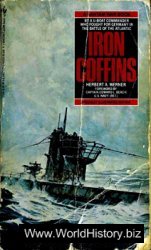There can be few historical events better known than the love affair between Mark Antony, triumvir of Rome, and the beautiful and talented Queen Cleopatra VII of Egypt. His association with Cleopatra may not have been without political motives, for there was much to be gained by Rome fostering good relations with Egypt, the wealth of which was proverbial. Ultimately, however, his relationship brought him into conflict with his astute, single-minded, brother-in-law, Octa-vian. The issue was finally settled in the battle of Actium, fought in September 31 BC, and a year later Octavian, who in 27 bc changed his name to Augustus, entered Egypt for the first and last time. Egypt, the land of the pharaohs and their hellenistic successors, the Ptolemies, was now part of the Roman empire.
Egypt was a land apart—an exotic and distant part of the empire, perhaps more bizarre than any other province. Here, pharaonic culture thrived and a visitor to Roman Egypt would have found himself in a time capsule, for the sights, sounds, and customs of Roman Egypt would have had more in common with pharaonic civilization than with contemporary Rome. Temples were still built in traditional style. The hieroglyphic script continued to be used, and Egyptian was spoken by the common people, although the lingua franca was Greek. Cleopatra was, as far as we know, the only Graeco-Roman ruler of Egypt to learn Egyptian, and then it was one of a multitude of languages in which she was proficient. Further indications of the depth of the all-pervading pharaonic culture is the persistence of mummification as a burial rite and continuing reverence for Egyptian gods. The special nature of Roman Egypt is undeniable, although there is a growing
Body of scholars who consider the ‘Romanity’ of Egypt to be a more significant aspect.
Whether this is the case or not, cultural differences existed and it is hardly surprising that Rome adopted a somewhat hostile and suspicious attitude to Egypt. Roman senators were forbidden to enter the country and native Egyptians were excluded from the administration. It is significant that the only Egyptian town founded by Rome was Antinoopolis, on the Nile in Middle Egypt. The force behind this establishment was Hadrian, one of the few emperors ever to visit the country. His own love affair with Egypt is reflected in his great villa at Tivoli, where he attempted to recreate a Nilotic landscape in the Canopus garden.
Despite its unique aspect, Egypt has a special role to play in our understanding of the Roman empire as a whole. The dry climate has led to the preservation of a wealth of evidence that is lacking in more temperate regions. It is, for example, a repository of written evidence that is seldom preserved elsewhere. Best known are the papyri, which give an unrivalled insight into the business affairs and daily life of Roman Egypt. One of the most famous and productive sites is the town of Oxyrhynchus near the Nile, about 200 km. south of Cairo. In 1897 two Oxford scholars, Grenfell and Hunt, began to quarry the rubbish of the ancient town {sebakh in Arabic) for papyri. Their work proved to be a windfall for papyrology, for the documents so far published occupy nearly sixty volumes and there is almost the same quantity awaiting study.
Egypt is also the most important country for ostraca, documents written on potsherds in place of papyrus. Between 1987 and 1993 excavations at the Mons Claudianus fort in the Eastern Desert yielded over
9,000 ostraca, the largest collection from anywhere in the ancient world. Eor the first time they document quarry operations and give us a unique insight into the provisioning and logistics of a major Roman enterprise in the desert.
Documentary evidence apart, Egyptian town sites and tombs often yield organic matter that is seldom available elsewhere. Textiles are often beautifully preserved, as are basketry, leather, or food remains. Unfortunately the potential of this material has yet to be fully explored, as all too often it has been discarded in favour of the written evidence. Thus, Grenfell and Hunt seem to have thrown this material aside to be used as fertilizer by the fellahin. Recent excavations, such as those at Mons Glaudianus, are beginning to rectify this imbalance.




 World History
World History









